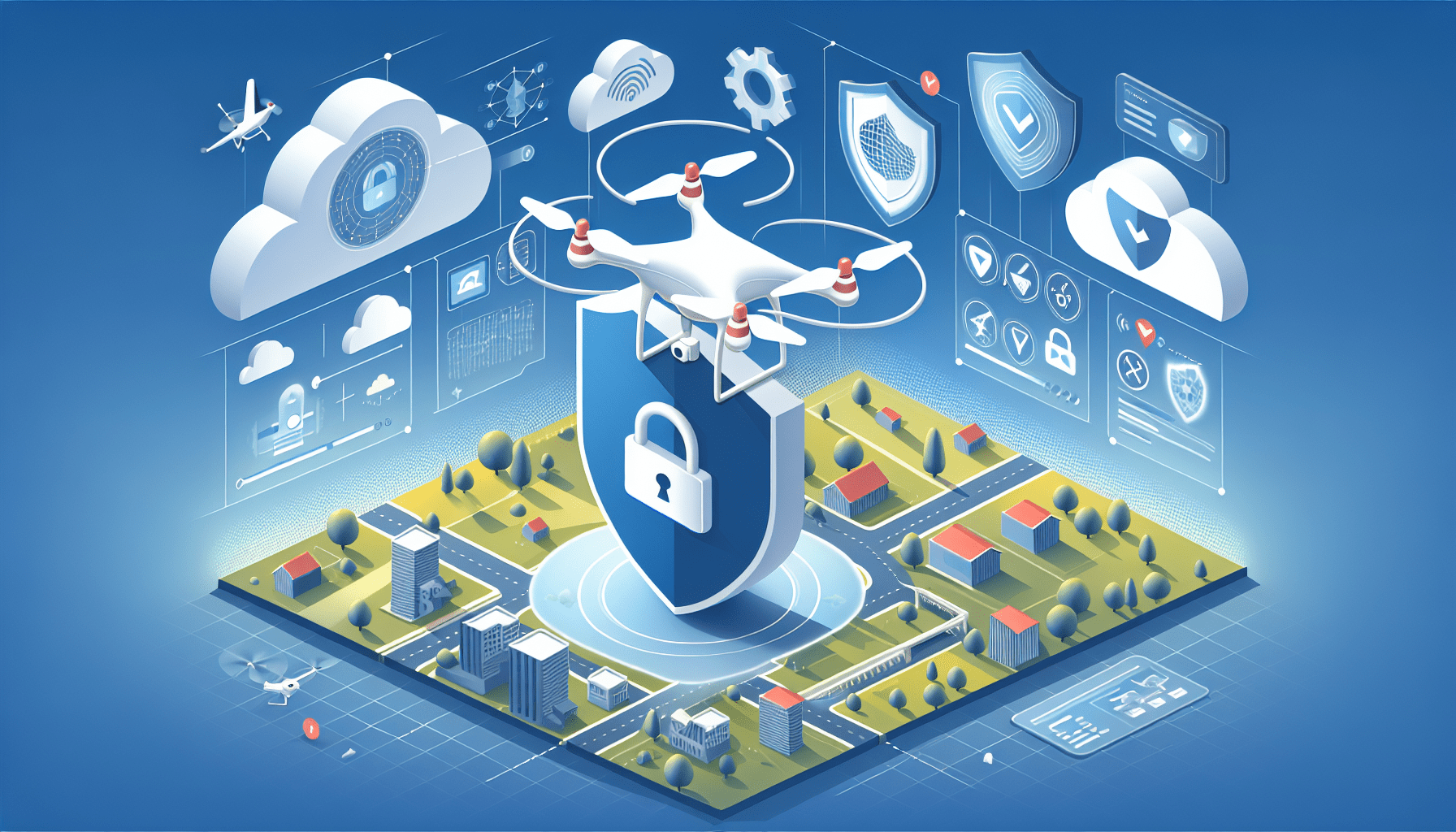Drone Data Security: 10 Expert Tips for Secure Drone Use
In This Article
- Use robust encryption protocols like AES-256 for both data in transit and at rest.
- Regularly update firmware using secure, isolated environments.
- Employ geo-fencing and access control protocols to restrict drone operations.
- Choose certified and compliant data storage solutions with built-in backups.
- Stay informed on regulatory changes and conduct regular compliance audits.
- Integrate enterprise-grade cybersecurity tools tailored for UAV ecosystems.
Understanding the Risks of Drone Data Breaches
Why Your Aerial Data Needs Protection
In today’s digitally-connected world, drone data security is no longer a luxury but a necessity. Drones have evolved from hobbyist gadgets into indispensable tools for industries such as agriculture, construction, real estate, logistics, and military operations. While the benefits are vast, the vulnerabilities associated with drone usage cannot be overstated. Drones are capable of capturing massive amounts of sensitive data, including topographical maps, proprietary blueprints, and surveillance footage. If this information falls into the wrong hands, the consequences could be severe — ranging from corporate espionage to national security threats.
The primary risks involve data interception during transmission, unauthorised drone hacking, hijacking mid-flight, and unsecured storage. Additionally, inexperienced operators may inadvertently expose networks through weak passwords or unmanaged software updates. Threat actors are becoming ever more sophisticated. They employ tactics such as spoofing drone GPS signals or deploying electromagnetic interference to disrupt drone operations and extract data. Given these potent threats, businesses and individuals must take an active stance in securing their aerial data.

Implementing Strong Encryption Protocols
How to Secure Data Transmission from Drone to Ground
Encryption is the first line of defence in drone data security, making it exceptionally difficult for an unauthorised party to interpret intercepted transmissions. End-to-end encryption ensures that data remains encoded from the moment it leaves the drone until it is decrypted on the received ground control system. This method is particularly vital during missions involving critical infrastructure or restricted zones, where leaked footage could be disastrous.
Most commercial drones use Wi-Fi or radio frequency for communication, which are inherently vulnerable unless secured by strong cryptographic standards such as AES-256. Transmissions should also be conducted over secure, private frequency bands with appropriate digital signature validation. Additionally, Transport Layer Security (TLS) protocols can shield control signals and telemetry data from man-in-the-middle attacks.
To further mitigate risks, both the drone and the receiving station should maintain updated security certificates and firmware. Data packets can also be fragmented and rerouted through secure networks, adding another layer of obfuscation for would-be cyber intruders.
“Encryption transforms drone data from a liability into a protected asset — the difference lies in implementation and consistency.” — Cybersecurity Expert
Choosing Encrypted and Approved Storage Solutions
Once aerial data is collected, how and where it is stored becomes the next critical issue. Cloud-based repositories are popular due to accessibility and scalability; however, not all cloud services meet the high standards required for drone data security. It’s imperative to choose services that offer data-at-rest encryption and follow compliance standards like ISO/IEC 27001 as well as regional regulations such as GDPR or CCPA depending on your jurisdiction.
For missions involving classified or proprietary content, local storage may offer superior control. Encrypted solid-state drives (SSDs) with biometric access can prevent unauthorised physical or digital tampering. Regular backups should be maintained using version control and stored in geographically dispersed, secure facilities. This approach guards against data loss due to equipment failure, malicious attacks, or environmental disasters.
The storage location’s physical and digital access logs should also be monitored in real time. Advanced machine learning tools can be incorporated to flag anomalies in access patterns, signalling a possible breach. Choosing trusted partners for data storage, accompanied by service-level agreements (SLAs), ensures accountability and prompt remediation in the event of a lapse.
Preventing Drone Hijacking and Airborne Hacking
Drone hijacking — or “dronejacking” — is a relatively new mode of cybercrime where an attacker remotely takes control of an active drone. This threat has severe implications, especially for security, law enforcement, and military applications. Preventing such attacks involves both hardware and software safeguards designed to authenticate connections between the UAV and its controller rigorously.
Authentication methods should utilise multifactor verification such as cryptographic keys, time-based tokens, or secure QR code pairing. Firmware that supports early detection of spoofing or signal interference must be prioritised. Additionally, operators should regularly scan for unauthorised devices or frequency anomalies before, during, and after flights using spectrum analysis tools.
Many drone manufacturers are now incorporating anti-tampering mechanisms at the firmware level that initiate automatic shutdown or return-to-home features when a security breach is detected. Disabling remote configuration unless on authorised networks further limits potential attack surfaces.
Leveraging Geo-Fencing for Security Enforcement
Geo-fencing is a GPS-based feature that sets virtual boundaries for where a drone is allowed to fly. It plays a dual role in both safety and security by preventing drones from entering restricted or high-risk areas, whether intentionally or through operator error. In the realm of drone data security, geo-fencing is vital in limiting operational exposure.
By configuring geo-fences, operators can restrict drones from flying over densely populated areas, critical infrastructure, or international borders — locations that are otherwise prone to serious data and regulatory implications. Geo-fencing can also be dynamically adjusted depending on scenario-specific risk profiles, offering flexibility for varying mission types.
Additionally, geo-fencing software should be integrated with crew resource management systems that notify users of safety violations. Importantly, these settings should be password-protected or managed through administrative privileges to prevent unauthorised changes.
Best Practices for Drone Firmware Updates
Firmware is the backbone of all drone operations, acting as the intermediary between physical hardware and software-driven tasks. Therefore, outdated, vulnerable, or modified firmware presents a lucrative entry point for cybercriminals. Ensuring that drones are operating with the latest firmware — developed and digitally signed by OEMs — is a non-negotiable aspect of drone data security.
Best practices include regular update schedules that are logged and verified post-deployment. Firmware should only be installed using an isolated network unconnected to the internet to prevent remote injection attacks. Automated scans for known vulnerabilities can further reinforce the safety net.
Organisations using multiple drones should employ a centralised firmware management platform that ensures consistency across fleets and provides real-time visibility into the firmware version lifecycle. Cross-referencing with manufacturer-issued security advisories also helps in staying ahead of threats. For more detailed drone maintenance strategies, refer to Learn more about Drone Data Security.
Access Control and Multi-Level Permissions
Limiting who has access to drone operations and associated data is foundational to robust drone data security. Whether it’s a team of surveyors or an entire UAV fleet managing national infrastructure, instituting multi-level user permissions restricts exposure and enhances accountability.
Control systems should enforce role-based access controls (RBAC), providing specific privileges depending on user roles — such as pilot, data analyst, or system administrator. All access should be authenticated using strong password policies combined with two-factor authentication (2FA). In environments handling sensitive data, biometric authentication or hardware tokens further complement digital defences.
Main control panels and dashboards should include real-time logging for all login attempts and changes to system configurations. These logs should be routinely reviewed to detect suspicious activities. Using a zero-trust architecture, where every attempt to access resources is verified regardless of origin, ensures that only trusted actors can interact with data endpoints. Learn more about layered cyber defences in our drone systems guide at Read a related article.
Privacy Laws and Compliance by Region
Drone operations do not exist in a legal vacuum. Each country, and often regions within countries, have specific regulatory frameworks governing how aerial data must be collected, stored, and shared. Ensuring compliance is not just about avoiding penalties — it’s a linchpin in responsible and secure UAV operation.
In the European Union, drone operators must adhere to the General Data Protection Regulation (GDPR), which mandates strict protocols for personal data captured intentionally or incidentally. Similarly, in the United States, compliance with the Federal Aviation Administration (FAA) guidelines is essential, complemented by state-level privacy rules.
Countries like Canada, Australia, and Japan also have evolving regulations requiring data localisation or restricted foreign data transit. Operators, especially those involved in international missions, should perform regular audits and seek legal counsel to remain compliant. Being certified by official bodies, such as the Civil Aviation Authority (CAA) in the UK, adds an extra layer of legitimacy and security. A comprehensive privacy laws overview can be found at Explore comprehensive drone data security and privacy strategies.
Cybersecurity Tools for UAV Operators
Modern cyber threats require equally modern defence systems. Cybersecurity tools tailored for UAVs offer advanced threat detection, intrusion prevention, and network security. Among the most reliable are security information and event management (SIEM) platforms, AI-powered surveillance systems, and real-time packet sniffers.
For drone-specific concerns, blockchain is increasingly leveraged for immutable flight logging. Mobile Threat Defence (MTD) systems protect handheld controllers from malware while operating in the field. Additionally, endpoint protection suites help secure all devices in the drone data ecosystem, from ground stations to cloud interfaces.
Many enterprise-level operations now rely on unified threat management dashboards that provide a holistic view of drone security statuses, alerts, and regulatory scores. These tools are especially valuable in coordinating across multiple departments and geographies, ensuring consistent policy enforcement and risk assessment.
Conclusion: Stay Ahead with Secure Drone Practices
[CONCLUSION_CONTENT]
Maintaining optimal drone data security is an evolving, proactive endeavour. As drones become more integrated into daily business and critical services, securing both the device and the data it collects is more urgent than ever. From encryption best practices to regulatory adherence, securing aerial data demands technical diligence, legal awareness, and consistent operator training. Organisations that treat drone data security as a strategic asset will not only prevent breaches but stand out as industry leaders in privacy, compliance, and innovation.
Great guide on aerial-data-security-protecting-your-drone-and-information – Community Feedback
What are the best practices to secure aerial data collected by drones?
Use strong encryption, secure cloud storage, limit access to authorized users, and regularly update your drone’s firmware to protect collected aerial data.
How can I prevent my drone from being hacked during flight?
Implement unique access passwords, use encrypted communication protocols, and restrict connections to trusted devices only.
What privacy risks are associated with drone usage?
Drones can inadvertently capture sensitive or personal information, making robust privacy policies and compliance with local regulations vital.
How does geo-fencing enhance drone security?
Geo-fencing restricts your drone’s movement to predetermined areas, reducing risks of intrusion and unauthorized data collection.

